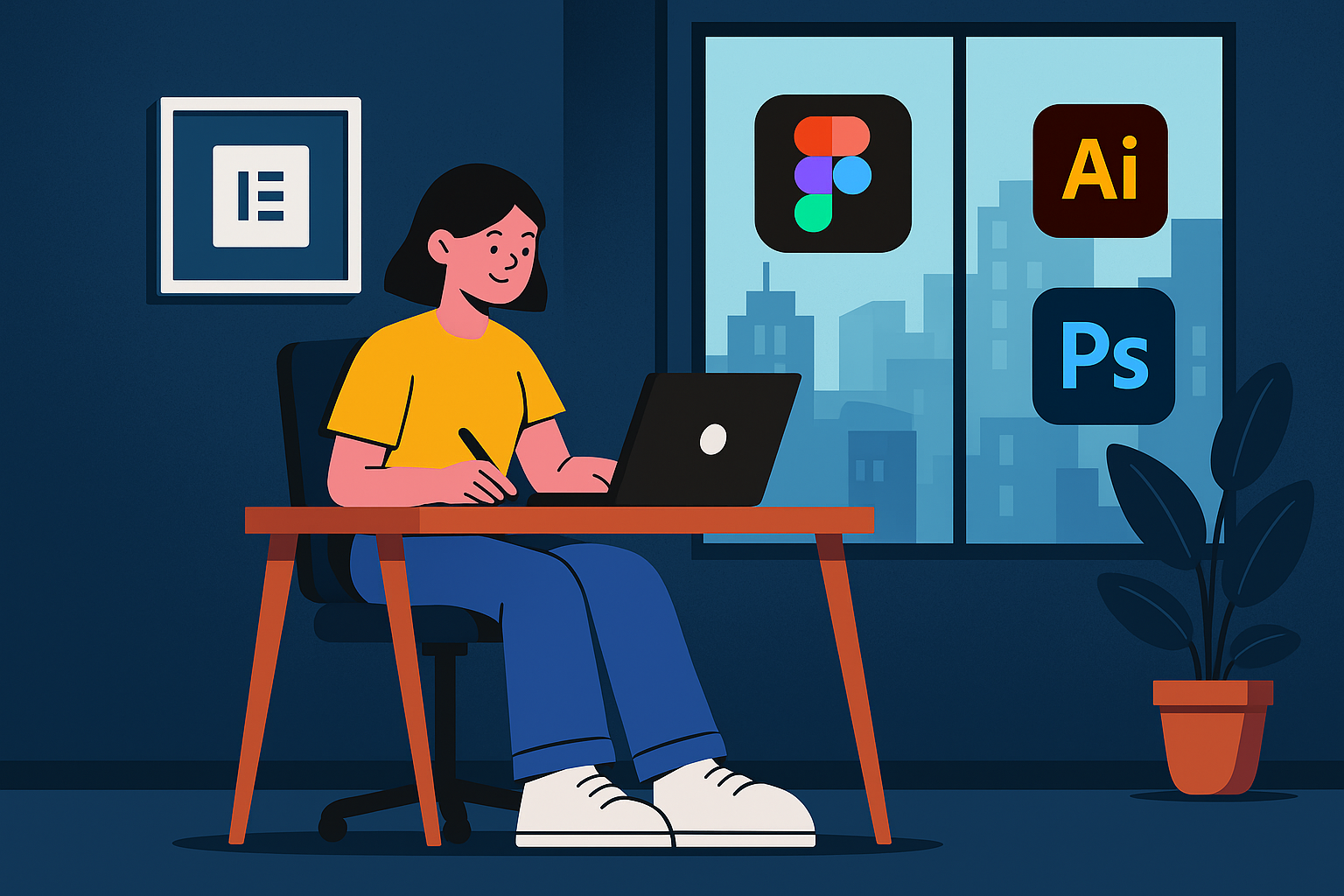Fundamentals of Graphic Design
What is Graphic Design?
Graphic design is a way of visually communicating ideas using text, images, colors, and layouts. It is used in everything — from logos and posters to websites and social media posts. It helps make information attractive, easy to understand, and memorable.

What are Design Fundamentals?
Design fundamentals are the building blocks of great visual design. These principles guide how elements are arranged and used to make a design balanced, clear, and effective. Understanding them helps you create more powerful and professional work.
Graphic Design Fundamentals
Typography
Typography is the craft of arranging type to make written language legible, readable, and visually appealing. It includes font choice, spacing, and alignment.
Read More.png)
Color
Color influences mood and emotion. It's used to create harmony, contrast, and guide the viewer’s attention across your design.
Read MoreWhite Space
White space—or negative space—allows elements to breathe. It enhances clarity, focus, and creates a clean, elegant design flow.
Read MoreScale
Scale is used to create visual hierarchy. Larger elements draw more attention, helping users know what matters most in the layout.
Read MoreTexture
Texture gives designs a sense of feel, depth, or surface. It can be visual (patterns, gradients) or tactile (real-world texture scans).
Read MoreShape
Shapes are fundamental design elements that build layouts. They can be geometric, organic, or abstract, and communicate meaning instantly.
Read MoreLine
Lines guide the viewer’s eye, connect elements, divide sections, or add style. Straight or curved—they bring structure and rhythm.
Read MoreForm
Form gives shape a 3D perspective, making it appear realistic and tangible. It adds depth and dimension to flat visuals.
Read MoreSimplicity
Simplicity means removing the unnecessary to focus on clarity. Clean, uncluttered layouts increase usability and visual appeal.
Read MoreComposition
Composition refers to the arrangement of visual elements. A strong composition ensures balance, flow, and coherent storytelling.
Read MorePerspective
Perspective creates the illusion of depth and space in a 2D design. It's used to simulate a 3D view using angles and distance.
Read MoreDepth
Depth makes your design feel immersive. Use layering, shadows, and gradients to separate foreground from background clearly.
Read MoreFraming
Framing draws attention to key elements by surrounding them with borders or contrasting visuals. It enhances focus and clarity.
Read MorePrinciples of Graphic Design
Quick Tips to Improve Your Design
- Use no more than 2–3 fonts per design
- Always align elements cleanly
- Let your layout breathe – use white space
- Create strong contrast for emphasis
- Maintain consistency in style and sizes
Practice Using These Free Tools
Want to dive deeper into each principle?
Start Learning Now